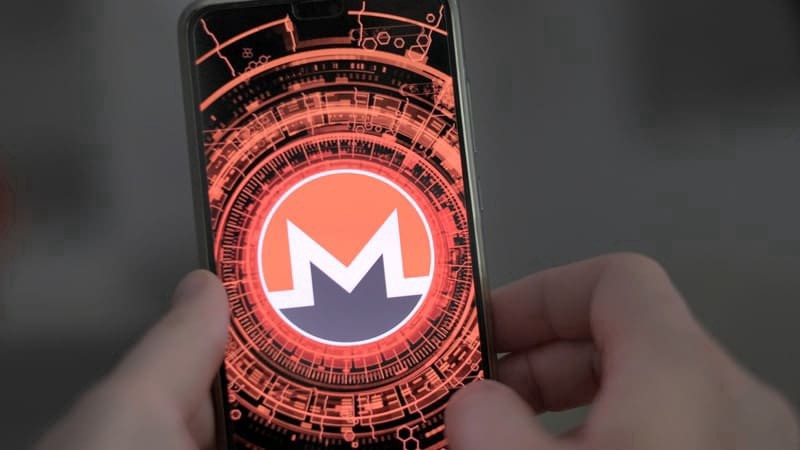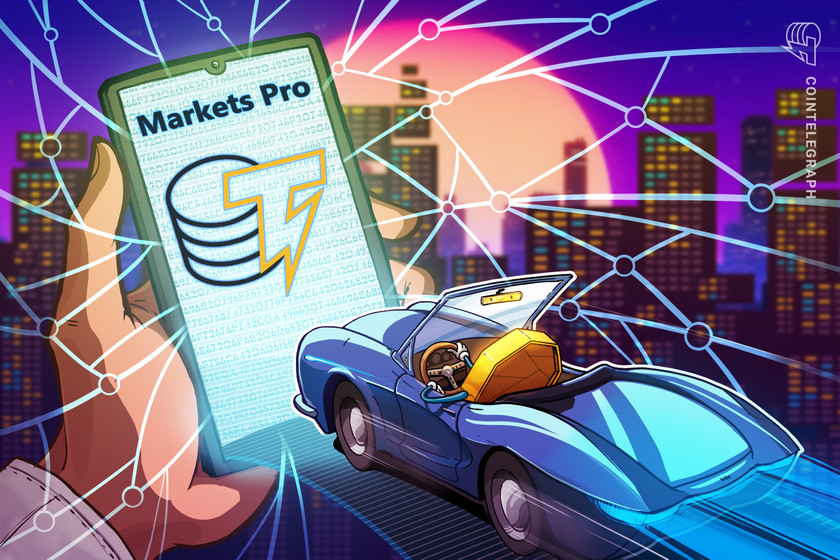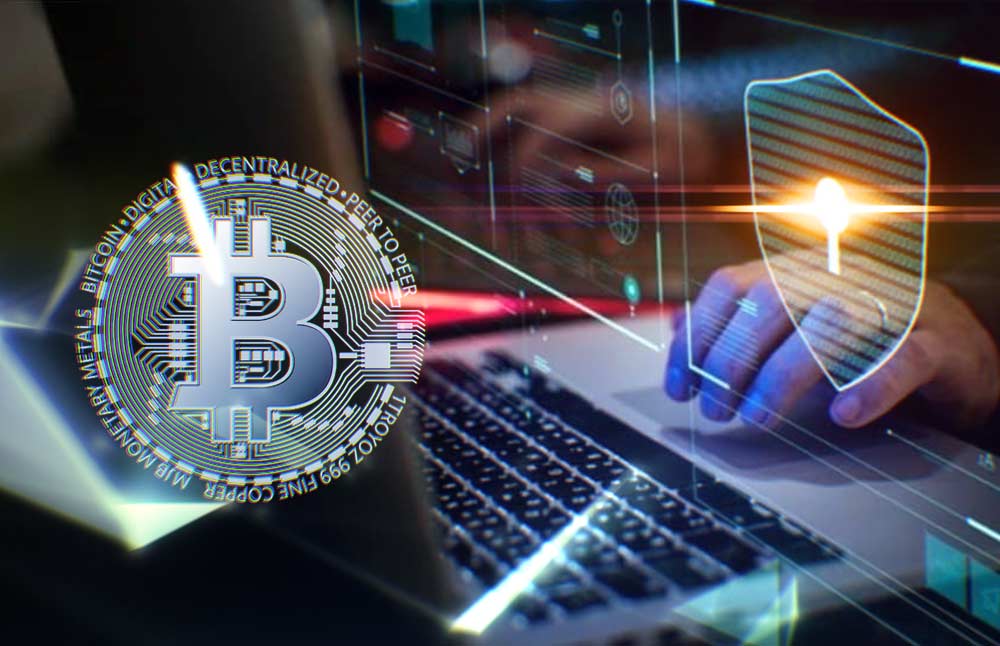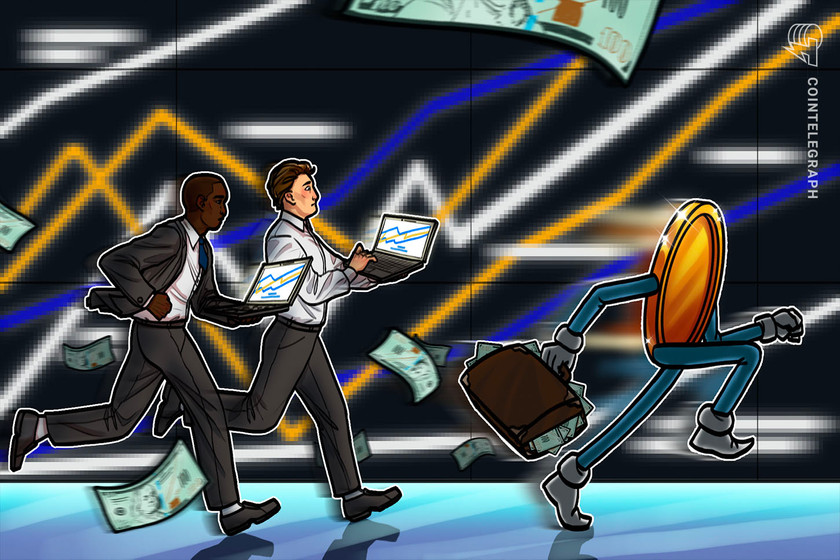Uniswap (UNI) vs Sushiswap (SUSHI). How To Buy [2021]
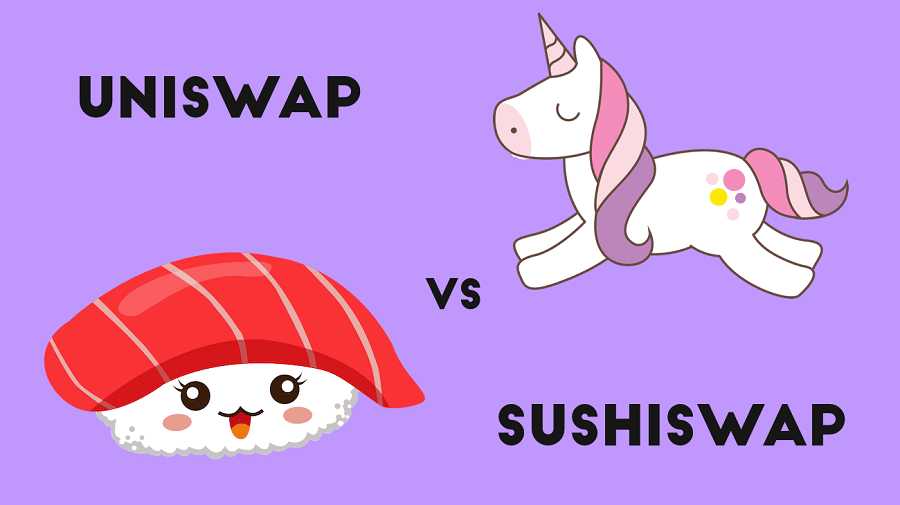
Decentralized exchanges (DEXes) are changing finance for the better. DEXes are a next-generation technology and they make the legacy financial system look like a bunch of people with fax machines and gargantuan computer monitors.
Just like anything else though, there is competition. Ethereum has the best, most liquid decentralized exchanges and in this article we’ll look at UniSwap and SushiSwap to see what the two DEXes have in common, and how they’re different.
We’ll also study the use cases for their respective currencies, the Uniswap token and Sushi coin.
All About Decentralized Exchanges
A decentralized exchange is unique because it’s controlled by code, not a centralized authority. In the traditional financial system there is one company, like the New York Stock Exchange, which handles all of the trading.
The NYSE can shut down the exchange or kick traders and organizations off the platform. A decentralized exchange is different. A DEX is governed by a smart contract, where no single person or organization has complete control. For example, the Uniswap developers can’t kick everyone from Iran off the exchange.
On a decentralized exchange, if you’ve got the money you can make the trade. That level of freedom is revolutionary and it all started with Uniswap.
The History of Uniswap
Uniswap was released on November 2nd of 2018, roughly a year into the last crypto bear market. For 18 months Uniswap had almost no traction and few people used the platform. The exchange didn’t even reach $50 million of value locked until June of 2020.
However, from there on out, the growth was exponential. By the end of 2020 Uniswap reached about $1.5 billion of value locked. As of March, 2021, there is $4 billion worth of assets locked up in Uniswap by liquidity providers. A complete history of Uniswap is available on their website.
September 16th, 2020, was one of the biggest days in Uniswap’s history. On that day Uniswap airdropped their UNI governance token to every Ethereum address that had previously interacted with the decentralized exchange. It was a massive token giveaway and tens of thousands of users benefited from the airdrop.
To this day Uniswap continues to dominate the decentralized exchange landscape. Uniswap regularly clears $1 billion per day in trading volume, making it one of the world’s most popular exchanges, decentralized or otherwise.
What Is Uniswap and How Does It Work?
Uniswap is the most popular decentralized exchange in the world. It’s built on top of Ethereum and clears roughly $25 to $30 billion in trade volume every month. Anyone can list a token on Uniswap, so there is theoretically no limit to how many assets can be traded on the exchange. The only limit is liquidity.
The Uniswap exchange takes a novel approach to liquidity. Traditional exchanges work by matching a buyer and a seller, but Uniswap is different. On Uniswap, a “liquidity provider” can deposit coins into the protocol. For example, $100 worth of DAI and $100 worth of ETH.
These coins are pooled with coins from other liquidity providers and that’s how the exchange generates liquidity. Uniswap users can swap their assets and the liquidity providers receive a portion of the trading fee as a reward for depositing their coins.
This is only a simplified explanation of how trading works on Uniswap. An in-depth explanation of the exchange is available in this guide: What is Uniswap?
Uniswap vs SushiSwap
Does the Uniswap & SushiSwap name sound familiar? That’s because the two protocols are based on the same code. In fact, SushiSwap is just a fork of the Uniswap exchange with a few modifications made to the code.
Both protocols charge 0.3% transaction fees, which is average for a crypto exchange. Coinbase Pro charges a 0.5% transaction fee while the ever popular Binance only charges a 0.1% fee. If you want to compare Uniswap vs SushiSwap you have to look at how those transaction fees are distributed.
On Uniswap the transaction fees are distributed to the liquidity providers. On the SushiSwap exchange, 0.25% goes to the liquidity providers while 0.05% goes to Sushi coin holders.
Sushi coin, or the Sushi token, is the governance token for the SushiSwap exchange.
How Sushiswap overtook Uniswap in total value locked (DeFi Pulse)
Distributing the Sushi token was one of the critical ways that SushiSwap was able to get more value locked in its platform. Not only do Sushi holders receive 0.05% of the total trade volume from SushiSwap, there is an ongoing distribution of the SushiSwap token to liquidity providers.
SushiSwap uses its token to incentivize people to participate on SushiSwap. This has helped the Sushi DEX to catch up with the project that it imitated.
In terms of total value locked, sometimes SushiSwap has more value locked and sometimes Uniswap has more. The two are very close and often switch places.
SushiSwap branching out to Binance Smart Chain
The SushiSwap development team has set up a contract on the Binance Smart Chain (BSC). Having the exchange running on another blockchain could help to bring in a new cohort of users. One of the key advantages of BSC is that transactions are faster and far less expensive than they are on Ethereum. SushiSwap has also expanded onto the Avalanche, Polygon and Fantom blockchains, showing that they are quite aggressive in their expansion strategy.
How to trade Your Uniswap and SushiSwap Tokens
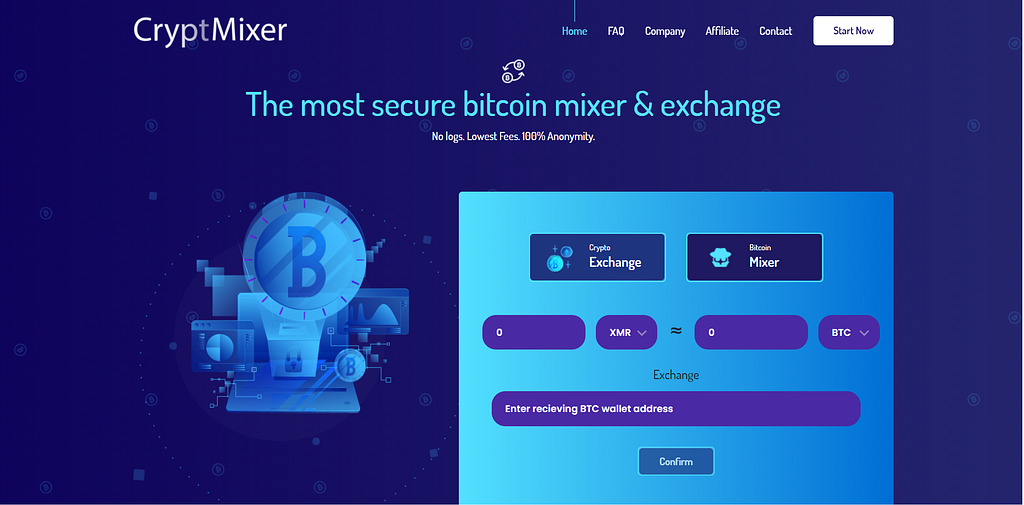
Buying the Uniswap & SushiSwap tokens can be a great long-term play for crypto investors. The only question is, how can you safely trade these assets for years to come?
The easiest way to trade the Uniswap & SushiSwap tokens is with the Cryptmixer crypto wallet. Cryptmixer supports both UNI and SUSHI, along with more than a 35 other cryptocurrencies. What’s so cool about Cryptmixer is that the wallet works on your computer.
Investing in both tokens is a smart move since it’s still unclear which exchange will win in the long term. Uniswap & SushiSwap offer a similar service and have nearly the same amount of liquidity locked up, so it’s hard to tell which one has an advantage.
Whichever decentralized exchange wins, it’s pretty cool to get into this market so early and participate as talented developers continue to build out a brand new financial system.
Will cryptocurrencies ever take over the world?
Cryptocurrency users who have questions about Uniswap and SushiSwap often ask; will cryptocurrencies ever take over the world?
The only answer we can give with 100% certainty is: we don’t know… It’s impossible to predict how cryptocurrencies are going to be integrated into the financial system. That being said, we can still speculate about how things might go in the future.
Bitcoin is the most popular cryptocurrency but it’s also got the largest target on its back. Bitcoin is trying to be money and if there is one thing governments don’t like, it’s when something interferes with their monetary sovereignty. Bitcoin could still be around in 50 years, but it may be optimistic to assume that countries the world over will run on a Bitcoin standard.
Ethereum is arguably more likely to take over the world, since it’s a smart contract platform. Although Ethereum users claim ETH is money, the primary function of Ethereum is to host smart contracts like Uniswap & SushiSwap. Because Ethereum is not trying to replace the Dollar or the Euro, there is (arguably) a better chance that it will take over the world.
Of course, the most likely outcome is that Central Bank Digital Currencies (CBDCs) are going to take over the world. This is an outcome that we can be pretty confident about. In ten years we probably won’t be arguing about Uniswap vs SushiSwap but we will be talking about the Digital Euro and the Digital Dollar.
Uniswap (UNI) vs Sushiswap (SUSHI). How To Buy [2021] was originally published in The Bullish on Medium, where people are continuing the conversation by highlighting and responding to this story.

